Reviews
Rupert Julian
USA, 1925
Credits
Review by Megan Weireter
Posted on 30 October 2010
Source Universal DVD
Categories 31 Days of Horror VII
An opera is frequently an over-the-top, unsubtle piece of art. The plots of the most famous operas typically involve forbidden love, murder, power struggles, adultery, and death scenes that drag on and on to fill out arias. If there’s comedy, it’s very broad, and if there’s tragedy, it’s milked to the fullest extent. The music can be grandiose, supported by gigantic orchestras playing up the drama of the singers, with all their wild vibratos and effusive acting. And in French operas, there will almost certainly be ballets as well. It’s an art form that’s all about opulence. People don’t go see operas in the numbers that they used to, but at the height of the nineteenth century French opera was a popular art that sought to bowl audiences over with spectacle in the same way that a special-effects-drenched film does today.
So when Universal adapted Gaston Leroux’s novel Le Fantôme de l’Opéra in 1925, they made a movie to do opera proud. “A cast of 5,000 others!” screams one movie poster for The Phantom of the Opera below the names of the three major stars (Lon Chaney, Norman Kerry, and Mary Philbin), making it clear that no expense was spared in recreating this grand Gothic romance. In many respects, the expense paid off. There’s much about this film to admire, and the mood of beautiful suffering, of love and death, is is striking in several scenes. But The Phantom of the Opera suffers from a troubled history full of multiple reshoots and various other directors stepping in to the waters. The result is an uneven film: there’s far too much awkward comic relief at the beginning (when we don’t need to be relieved of anything yet) and no other funny moments for the duration of the movie, for instance. And the final scenes devolve from bizarre, moody love triangle into booby-trap heavy action sequence that’s underwhelming at best after what’s come before. In spite of all the spectacle, the meat of the film is in the love triangle between diva, aristocrat, and mysterious man who hides in the walls and may or may not be an actual ghost—and in the best setpieces, the spectacle serves that story beautifully.
We open with a fuzzy scene shot with a red filter as a man with a lantern walks through followed by a mysterious shadow. (The whole film makes excellent use of color, with filters that cast moods over entire scenes as well as through judicious use of technicolor in certain crowd scenes.) The first title card sets the scene: “Sanctuary of song lovers, the Paris Opera House, rising nobly above medieval torture chambers, hidden dungeons, long forgotten.” This is what’s creepy about the opera house in particular: that it’s been built (as indeed the whole city has been) on a labyrinth of old Paris, with all its buried horrors of the Dark Ages. The opera house might tower above grandly, but the secrets from beneath are probably just waiting to burst out.
What’s playing at the opera house is Faust, by Charles Gounod, which premiered in 1859 and was long a staple of the opera repertoire in Paris through the nineteenth and twentieth centuries. An adaptation of the famous tale of a man who sells his soul to Satan, this operatic version of the story pays particular attention to Faust’s victimization of an innocent woman, Marguerite, who escapes only through death and a literal onstage ascension into heaven. Considering the great popularity of Faust at the time of the film’s premiere, the parallels between the story of Faust and the story of The Phantom of the Opera would, I think, have been well known to audiences, perhaps even overly obvious. (The opera’s popularity has waned in recent years, after many decades of being one of the most frequently performed operas ever—both in Paris where it originally debuted and throughout North America.) At any rate, tonight the opera house is filled with stylish Parisians, and the dancers are all aflutter performing the opening ballet. Meanwhile, in a back room, the previous owners of the opera house formally complete its sale to two unknowning saps with all the glee you’d expect from anyone who’s just gotten rid of a giant haunted house. Indeed, it’s not long before the new owners get a taste of what they’ve gotten themselves into, after their encounter with the mysterious gentleman who always sits in Box 5.
The gentleman in question, who calls himself Erik or the Phantom depending on how it suits his needs, has taken an interest in a chorus girl named Christine Daaé. Through a series of rather aggressive notes to the owners and others, he has almost managed to replace the opera house’s prima donna, Mlle. Carlotta, with Christine in the role of Marguerite. Christine believes that her benefactor is a benign angel, and initially makes no connection between him and the legendary Phantom whom the silly ballet girls and the stagehands all live in fear of seeing. In fact, when he speaks to her through the walls of her dressing room, she’s so clearly aroused by his attentions that it’s almost untoward—it seems clear, at least at the beginning, that her stuffy fiancé Raoul doesn’t stand a chance against her sexy invisible voice coach. It’s only when Christine first lays eyes on Erik, when she’s followed him out of her dressing room and into the tunnels beneath the opera house, that she’s at all frightened. And it’s because of Erik’s mask, which has none of the elegance of the more contemporary depictions in, say, the Broadway musical—it’s a more realistic waxy mask with a flap over the mouth that crinkles gruesomely when he speaks. His expressionless eyes and painted eyebrows as he expresses his love to Christine make the entire attempt more icky than romantic. Of course, the mask is just hiding the even more terrifying sight of Erik’s own mangled face, revealed to us all about halfway through the film in a justly famous scene. Much has been said about Lon Chaney’s makeup here, which he designed on his own to resemble a skull. It’s still pretty effective 85 years later.
What continues to attract Christine to Erik despite his mysterious and eventually repulsive nature is his musical genius. He seems to have been drawn to the world of music because the visual world is so bound to reject him; in his opera house cellar out of sight of the world, though, Erik can play his organ and compose his opera in peace while trying to seduce Christine, his own personal diva whose voice he has trained himself. But it’s not going to work. Christine is scared off forever on seeing his horrifying face, and music alone won’t win her back once the damage is done. The visual world wins, which means that Erik is doomed.
Erik isn’t just a victim, though, and it’s not just his face that people are afraid of. Although it’s easy to forget with everything else going on, he has actually murdered a couple stagehands at the opera house, and by the end the brother of one victim is enraged enough to lead a mob clamoring for revenge. When his demand that Christine sing the lead in Faust is flouted, he engineers the collapse of the gigantic chandelier into the packed house, right at the moment Carlotta sings Marguerite’s famous Act III aria about how pretty she is when she looks in her mirror. (Again, here’s an emphasis on physical beauty, as well as the image of the mirror, which will eventually lead Christine into the underworld. Once again, Faust echos the film - or vice versa - in a way that’s almost not subtle enough.)
As elaborate a setpiece as the falling chandelier is, the movie has an even better one in store—as well as an even more dramatic moment for Erik to scare everyone. At the famous Paris Opera House masked ball, what seem like thousands of people cavort in red-tinged technicolor, basically enacting orgies on the grand staircase. Christine and Raoul somehow manage to find each other and steal away just before the Masque of Red Death strides in, parting the crowd before him. Everyone knows who’s behind the cartoonish skull mask. Holding his staff aloft, he screams at the crowd, “Beneath your dancing feet are the tombs of tortured men—thus does the Red Death rebuke your merriment!” A line like that pushes us almost into the realm of camp, but in the context of so much grandiose emoting it’s weirdly powerful.
Watching this for the first time, I was struck throughout by how well silent film and opera work together as art forms. Of course a silent film is silent, and relies on its score to heighten the drama—and though I thought the score I heard was great, I have no idea how authentic it was, as Netflix didn’t provide any information on it. Music aside, though, the actors still reminded me of opera stars in the way they hit each melodramatic pose, in the way they raised their arms in fear and rolled their eyeballs back in passion. The acting style of silent films can look a bit strange to our modern eyes, but in a movie about opera, and in a horror movie about opera in particular, the artificiality of this somehow seems perfectly appropriate. The cinematography, too, is harrowing even to a modern viewer, capturing the right moods in a way that as gorgeous as it is unsubtle. The Phantom of the Opera is a high-budget silent film and looks it. More to the point, even to one not accustomed to watching silent films (like me) this is a genuinely eerie movie. Opera and silent film are both art forms that might seem antiquated and played out, particularly in these irony-rich times. But The Phantom of the Opera is a testament to the histrionic charms of both.
More 31 Days of Horror VII
-

The Thin Blue Line
1988 -

The Ninth Configuration
1980 -
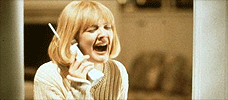
Scream
1996 -
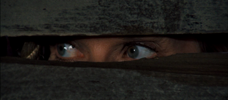
Dying Room Only
1973 -
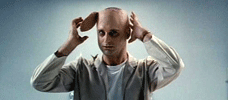
Brain Dead
1990 -
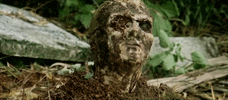
Zombi 2
1979 -
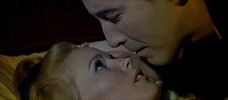
Dracula Has Risen from the Grave
1968 -
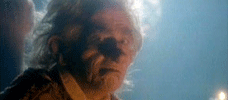
The Storyteller
1988-1989 -
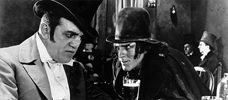
Dr. Jekyll and Mr. Hyde
1920 -
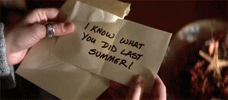
I Know What You Did Last Summer
1997 -
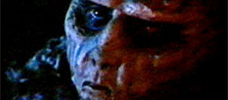
Don’t Be Afraid of the Dark
1973 -

Dark Age
1987 -
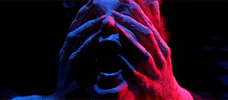
Inferno
1980 -
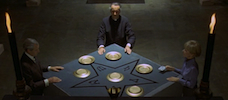
To the Devil a Daughter
UK / West Germany -
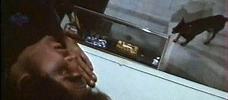
Trapped
1973 -
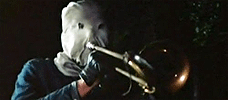
The Town that Dreaded Sundown
1976 -
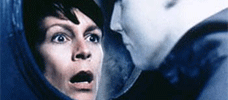
Halloween H20: Twenty Years Later
1998 -

Killdozer
1973 -
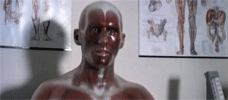
Pin
1989 -
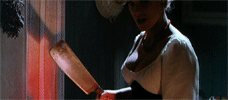
Frankenstein Created Woman
1967 -
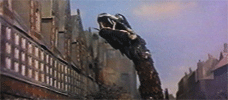
Reptilicus
1961 -
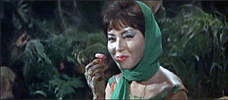
Matango
1963 -
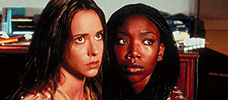
I Still Know What You Did Last Summer
1998 -
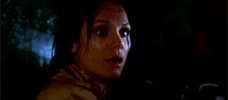
Night Terror
1977 -
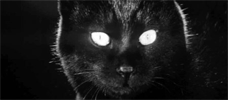
Kuroneko
1968 -

Demons
1985 -
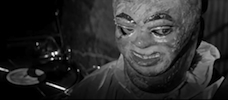
Paranoiac
1963 -
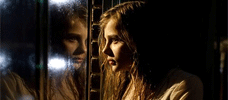
Let Me In
2010 -
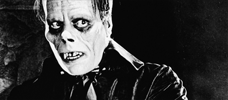
The Phantom of the Opera
1925
We don’t do comments anymore, but you may contact us here or find us on Twitter or Facebook.



